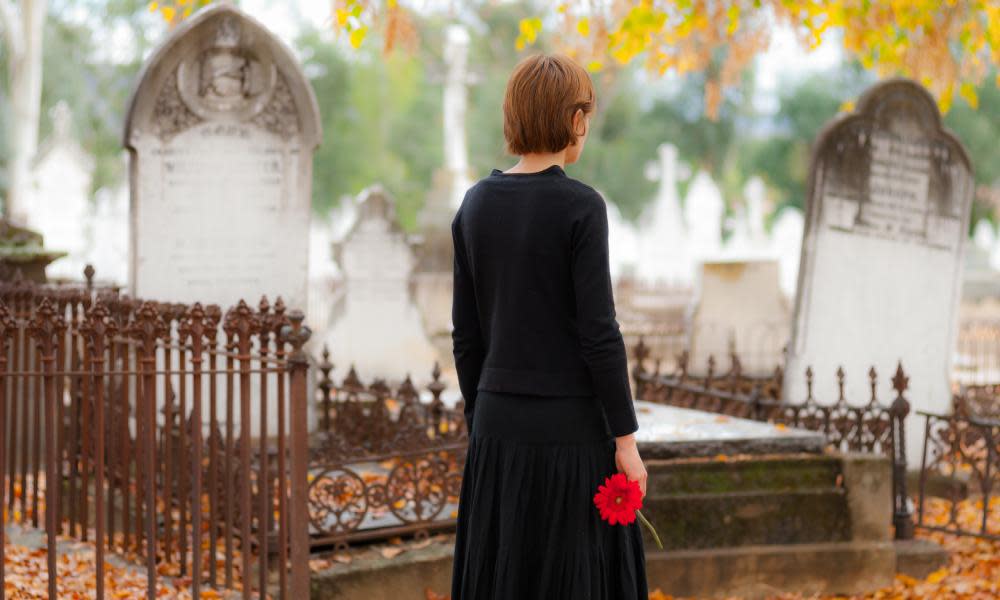The Dark Interval: Letters for the Grieving Heart – review

Rainer Maria Rilke had written 14,000 letters by the time of his death in 1926, aged 51. This slender book, a selection of letters of condolence, available for the first time in English, is a treasure. The solace Rilke offers is uncommon, uplifting and necessary. He was drawn to the idea, expressed in his poetry, that difficulty in life is essential, that we should not attempt to evade it, that it contributes to achievement, fulfilment and self-knowledge. Rilke recognises that the death of people we love is the greatest challenge but sees that death is insurmountable. He never tells bereaved correspondents that time will heal nor falls into the common trap of trying, with the best intentions, to demote death. He is as unplatitudinous as it is possible for the author of letters of condolence to be.
Rilke writes as a David facing Goliath. He knows that words, weak though they might seem, are strength and must be thrown in death’s path. His conviction was that we must not turn away from death. The focus must be absolute. But he also dwells on the way death throws life into sharper relief. We can, he believes, live more intensely because of it. “Death, especially the most completely felt and experienced death, has never remained an obstacle to life for a surviving individual, because its innermost essence is not contrary to us.” He sees death as the other half of life, sure as shadow.
He insists we should not aspire to being consoled but be 'curious' to explore loss as an inner landscape
Reading this book, I recalled the strange sense I had, after my mother died, of missing a skin and of having an altered critical radar. I remembered looking through poems to find something to read at my mother’s funeral and feeling I knew, unhesitatingly, with what may have been deluded clarity, what was “true” and what was not. I did not want the contamination of anything bogus or trifling. Rilke explores something comparable. He describes death as “the dark interval” that leads to illumination and may even disinter a kind of joy. He suggests that loss, although apparently disabling, can involve a reconstituting of self and writes that the disturbance of death leads to “a new order” within – loss as a lens. He writes of his Duino Elegies (1923), his highly wrought sequence of poems and masterpiece, that their “secret thesis” is that the most painful events of life can also be the most defining.
He writes to Sidonie Nádherná von Borutín, wife of the writer Karl Kraus, whose brother killed himself, about how we carry the dead. He urges: “You must continue his life inside of yours.” Writing about the death of his father, he says: “What had died for me, so to speak, had died into my own heart.” He maintains – and this is harder to grasp – that “transience is not separation”. He is in unceasing pursuit of unity: “By way of loss, by way of such vast and immeasurable experiences of loss, we are quite powerfully introduced to the whole.” He seeks a harmonious understanding of life and death and ends by urging Kraus’s wife to listen to Beethoven because he, too, was “committed to the whole”.
Unity needs to be pursued in a down-to-earth way too. He writes about unfinished tasks left in the aftermath of a death and how the process of mourning will often include hard work, the picking up of dropped stitches: “Not one person has been taken from me without my having found the tasks around me increased.” Ulrich Baer, the editor of this book, tells us in his introduction that it was this idea that most spoke to him and moved him and he read the extract in question aloud at his father’s funeral.
One of the pleasures of this book is in the shifts of tone that reflect Rilke’s sensitivity to his correspondents (he had many aristocratic friends – countesses abound). He is courteous, sometimes urgently effusive, his writing occasionally borders on the starchy. He recognises that the process of mourning is individual. But he tends not to focus on the person (or, in one case, the dog) that has died. He takes “modern religion” to task for “providing their believers with consolations and embellishments of death instead of giving their soul the means to reconcile and communicate with it”. He insists we should not aspire to being consoled but be “curious” to explore loss as an inner landscape. He also salutes the power of nature to heal “as long as one does not eavesdrop or interrupt it”. In a sense, the contents of this book should be relabelled letters of non-condolence. It was Rilke’s fresh, courageous, undeceived approach that ensured that recipients held on to these letters as keepsakes and that we can now do the same.
• The Dark Interval: Letters for the Grieving Heart by Rainer Maria Rilke (translated and edited by Ulrich Baer) is published by Bloomsbury (£12.99). To order a copy for £11.17 go to guardianbookshop.com or call 0330 333 6846. Free UK p&p over £10, online orders only. Phone orders min. p&p of £1.99


